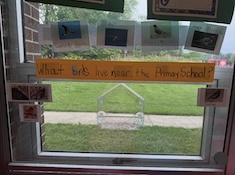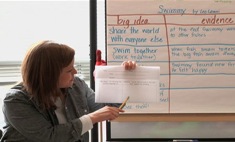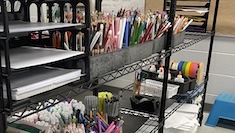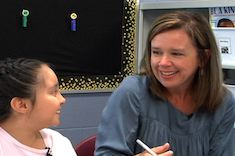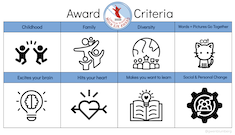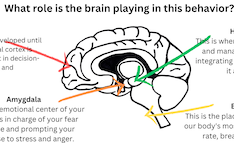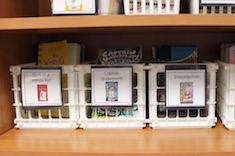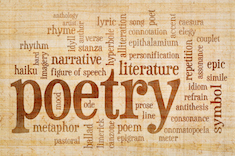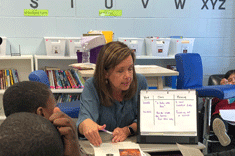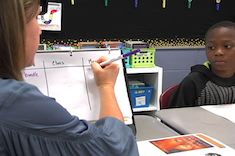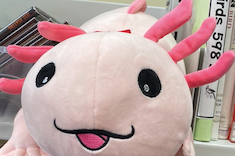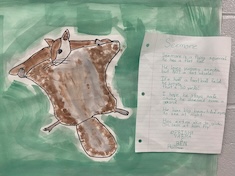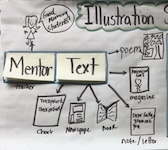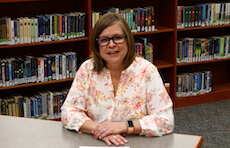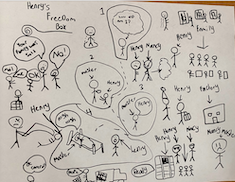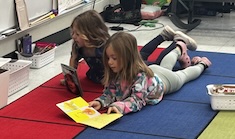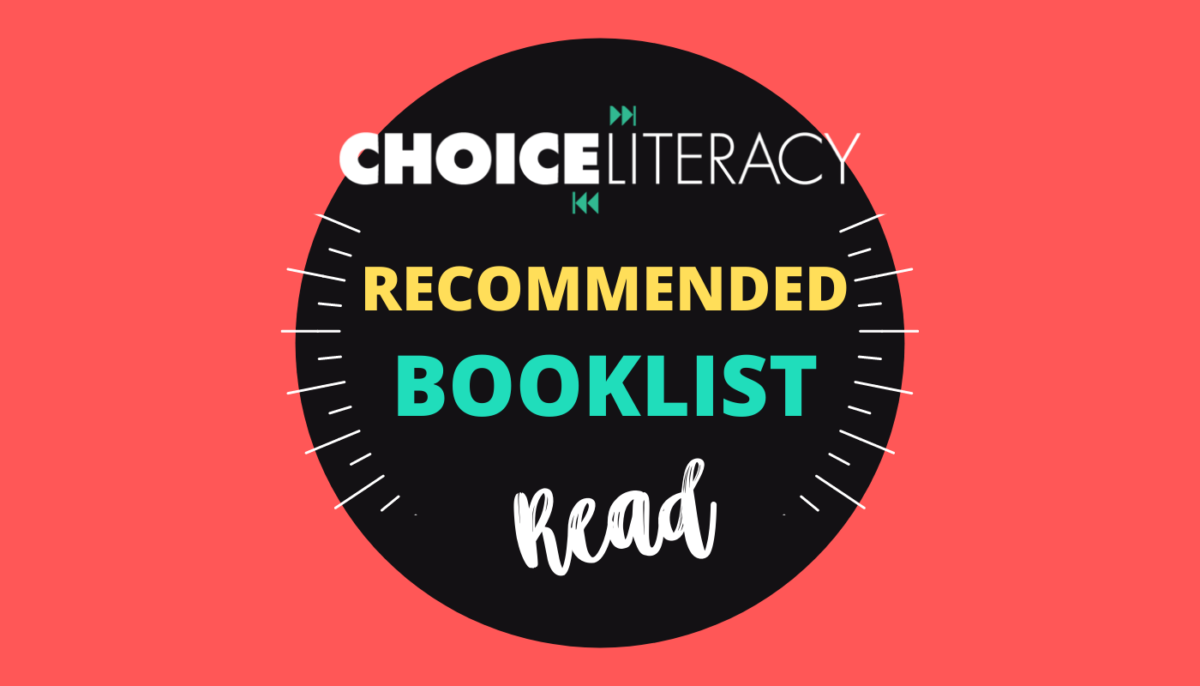2nd
Latest Content
Just Ask Them: Including Students in the Feedback Process
Hypothesizing what our students might be thinking eats into our time to act upon what they’re actually thinking. Heather Fisher suggests, “Let’s just ask the students.” Heather outlines a process for gathering responses from students of all ages and compiling the data to make it useful in determining next steps.
Protecting Choice and Inquiry with Outdoor Learning Walks
As curriculum shifts in our buildings to feeling more structured, Kate Mills and Tara Barnett reflect on how to protect student choice and opportunities for inquiry. They share a simple and practical way to create opportunity for both choice and inquiry through outdoor learning.
Wheels: Adapting to Change on the Roller Derby Track and in Your Teaching Life
Gwen Blumberg is inspired by a challenging roller derby practice and sees parallels for teachers who are facing challenging situations with changes to literacy curriculums. If something is shifting in your life, this article is sure to offer you confidence in moving forward.
Walking a Teaching-Readers Tightrope: Finding Balance Between Beliefs and Expectations
Hannah Tills offers a much-needed metaphor for all teachers who are implementing a new curriculum resource. Rather than thinking of the new expectations as part of a pendulum, Hannah encourages us to think of walking a tightrope. She offers ways to stay rooted in student engagement, student access, student choice, and teacher autonomy while also meeting expectations of a newly adopted curriculum program.
An Ode to the Anchor Chart
In a world where anchor charts are becoming digitized and developed by curriculum publishers, Bitsy Parks reminds us of the power and importance of co-creating anchor charts with students. She outlines key steps and ways to adjust anchor charts to connect with students and improve engagement.
Classroom Tour: Kinds of Spaces to Help Learning Blossom
Mandy Robek takes time to consider different places students will use in the classroom. She considers books, portable learning spaces, and the way learning will blossom over time in her third-grade classroom.
Creating a Space
Gwen Blumberg clearly outlines different kinds of spaces for our classrooms and libraries. She was inspired by David Thornburg’s Learning Space model where he suggests creating campfires, watering holes, and caves to support different kinds of learning.
Five Things I’ve Used AI for This Week
From lesson planning to generating decodable texts, Dana Murphy shares five ways she uses AI as a reading interventionist.
And the Winner Is… Planning and Implementing a Mock Book Award
Gwen Blumberg shares a school-wide approach to a mock book award experience. This clear step-by-step guide with a rich resource download makes it possible to implement in any school.
What Just Happened? Download a Behavior Sheet
Becca Burk shares her new learning about how the brain responds to trauma and the way she uses neuroscience to help respond to challenging behaviors in her classroom. Download a practical behavior sheet to help guide your responses to tricky behaviors.
Community Circle
Bitsy Parks reminds us of the importance of taking time to talk, ask questions, and share thinking in a circle format. Community circle is a practice that strengthens an inclusive community.
The Influence of the Classroom Library
Heather Fisher writes a bold article addressing the many questions educators are facing about their values and beliefs when it comes to our classroom libraries in this time of a heavy emphasis on phonics instruction and decodable books.
Rhyme and Reflect: Fostering Fluency Through Poetry
Joanne Emery recommends using poetry to help children practice their oral expression. She offers many poetry books and strategies for fluency practice.
What Is ORF Anyway?
Dana Murphy reminds us that teaching students to read faster is often a surface-level answer to a much deeper question. Reading is a complex process; if you’re wondering what to do about oral reading fluency scores, then Dana offers powerful encouragement.
How to Intensify an Intervention
What happens when students’ reading data takes a downward trend? Dana Murphy encourages us to be confident and intensify a reading intervention with three practical moves.
Got Criteria? How to Help Students Engage with Success Criteria
Heather Fisher offers four tips for engaging our youngest students with daily criteria for success.
Welcome, Everyone!
When Gigi McAllister says the library is a place for everyone, she means everyone! As a child Gigi did not like reading, so she is passionate about creating a space in the library where everyone feels like they belong.
Whole-School Animal Research
Gigi McAllister shares an annual school-wide research project she leads in the library. You’ll be inspired by the way a focus on research can bring joy and belonging to all students in all grades.
Shared Writing with Older Readers and Writers
Mandy Robek explored using shared writing experiences in her third-grade classroom and discovered it offered many rich literacy learning opportunities.
Now What? We Went on a Field Trip
Mandy Robek thoughtfully connects a field trip to multiple literacy experiences in her second-grade classroom. If you’re looking to leverage the field trip experience for reading and writing, you’ll love Mandy’s process.
Uplifting Independent Reading in the Living Room
Gwen Blumberg offers ways to make the library a welcoming space for readers to settle in with their choice of books. Classroom teachers can consider creating a living room, too.
Mentor Texts Elevate Readers and Writers
Bitsy Parks uses mentor texts to elevate her students as writers. Although mentor texts are included in many curriculum programs, Bitsy offers more opportunities for students to use mentor texts to strengthen their reading and writing lives.
Expecting Joy in the Classroom Library
Bitsy Parks shares the joy you can expect from the classroom library.
Sketchnoting in the Library
Gigi McAllister shares how she helped her students get started with sketchnoting during read aloud time. Perhaps like Gigi you aren’t a natural at this format, but you’ll be inspired by the value and ease of introducing this powerful note-taking technique.
Meaning Makers
Josie Stewart and Hannah Tills push against the adage that “early readers are focused solely on learning to decode, while later readers are making meaning.” Instead they remind us of the beautiful way all readers are meaning makers.
I’m an Everything Person!
Bitsy Parks writes about the connection between identity and engagement, offering small steps to help all students believe in themselves as learners.
Unleashing Writers
Mandy Robek chronicles the way choice and independence allowed students to have more energy and joy while writing.
Reframing Writers
Julie Johnson encourages educators to take a more in-depth view when assessing student writers. Checklists don’t necessarily grow writers, but focusing on what students are doing well and nudging them forward will.
Navigating the Election Season Booklist
Mandy Robek shares a booklist inspired to give students background about U.S. presidential elections.
Vertical Whiteboards
Tammy Mulligan shares how vertical whiteboards are a powerful tool to support collaboration and make student thinking visible.
Browse Content By
Type
Category
- Assessment Tools
- Big Fresh Archives
- Booklists
- Choice Numeracy
- Classroom Design
- Common Core
- Community Building
- Conferring
- Content Literacy
- Digital Literacy
- English Language Learners
- Equity
- Family Relations
- Free Samples
- Guiding Groups
- Leadership
- Literacy Coaches
- Mentor Texts
- Minilessons
- New Teacher Mentors
- Podcasts
- Poetry
- Quote Collections
- Reading Strategies
- Self Care
- Struggling and Striving Learners
- Talking and Listening
- Teacher Study Groups
- Teaching Reading
- Teaching Writing
- Word Study and Vocabulary
Author
- Melissa Quimby
- Nawal Qarooni
- Gwen Blumberg
- Julie Cox
- The Lead Learners
- Hannah Tills
- Josie Stewart
- Ruth Metcalfe
- Mallory Messenger
- Becca Burk
- Jodie Bailey
- Vivian Chen
- Mary Brower
- Tiffany Abbott Fuller
- Stephanie Affinito
- Ruth Ayres
- Leigh Anne Eck
- Heather Fisher
- Shari Frost
- Julie Johnson
- Suzy Kaback
- Gigi McAllister
- Shirl McPhillips
- Melanie Meehan
- Cathy Mere
- Debbie Miller
- Tara Barnett and Kate Mills
- Tammy Mulligan
- Dana Murphy
- Bitsy Parks
- David Pittman
- Brenda Power
- Heather Rader
- Matt Renwick
- Mandy Robek
- Christy Rush-Levine
- Gretchen Schroeder
- Jen Schwanke
- Brian Sepe
- Katherine Sokolowski
- Stella Villalba
- Jennifer Vincent
Grade Level
Choice Literacy Membership
Articles
Get full access to all Choice Literacy article content
Videos
Get full access to all Choice Literacy video content
Courses
Access Choice Literacy course curriculum and training


